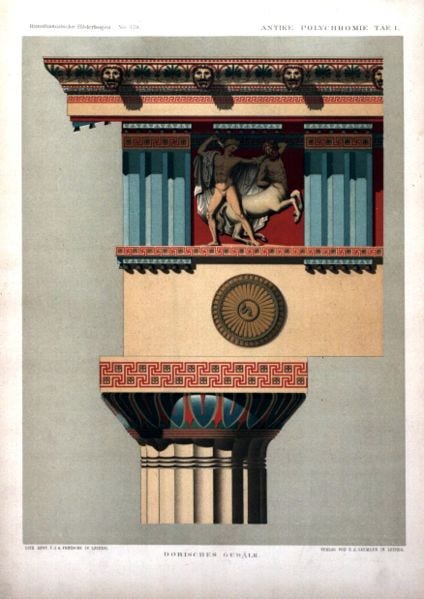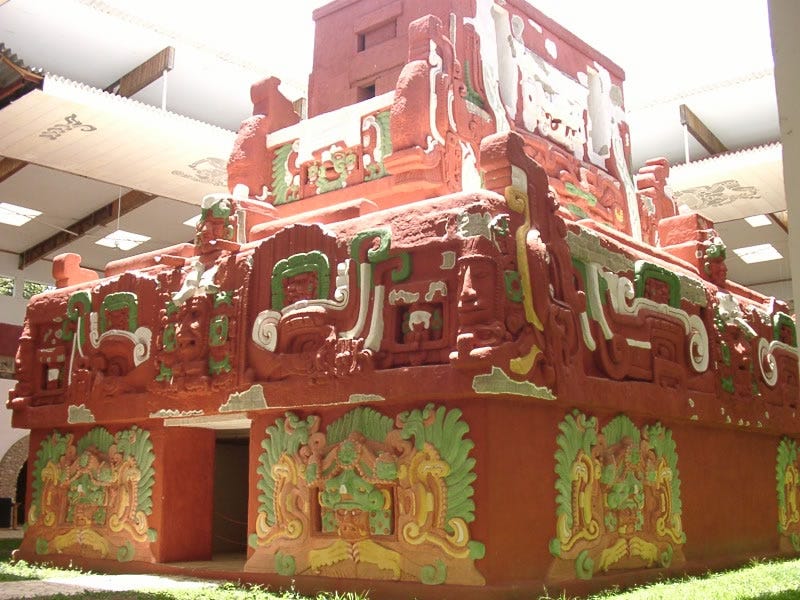We usually think of very old buildings and statues as plainly colored, with just the color of the stone, but in fact they were usually painted colorfully, as the Greek pictures below show. Mayan temples and gothic churches were also wildly colored. But if so, why don’t we see the remaining buildings, statues, etc. painted like that today, so people can see what they looked like? They are often painted, but with plain stone color paint!

You might say it is because we can’t be sure exactly what colors were where. But we often renovate the buildings themselves extensively, and add in missing statutes, even when we aren’t sure exactly what the original buildings or statues looked like.
Also consider that cities like Paris and Washington DC designed their buildings and building codes to look like ancient buildings, except without the paint. Same for many universities like U. Chicago. You might explain this as due to people believing incorrectly that the ancients didn’t have paint. But paint isn’t remotely a recent invention, why would anyone think it was?

Here’s another explanation: thinking of the distant past evokes our far mental mode, in which we tend to think of objects having fewer relevant surfaces and less texture detail. Unpainted buildings and statues appear to have fewer surfaces and less texture – they look more far. We subconsciously think that unpainted things make more sense as something associated with the distant past.
Since power evokes a far mode, your architecture can evoke a far mode that suggests power if it has fewer relevant surfaces and a simpler texture. So people have seen the unpainted ancient style as more distinguished, and places like Paris and Washington DC required such a style as a way to assert their power.





Those maintenance costs are likely a big part of what made bright colors such an effective status display when the buildings were new.
Then again, if lack or ornamentation, texture and detail make us think powerful and impressive, why are the boring, smooth, glass office building of recent years not aging gracefully and growing in popularity. Even in interior decorating, neutral colors look rich and lots of bright color is considered young and garish and relegated to the children's bedrooms.